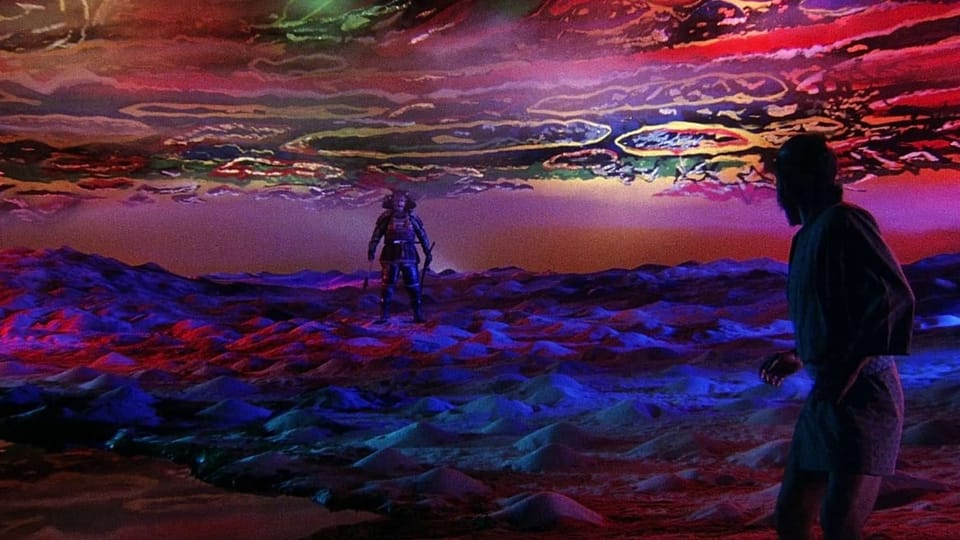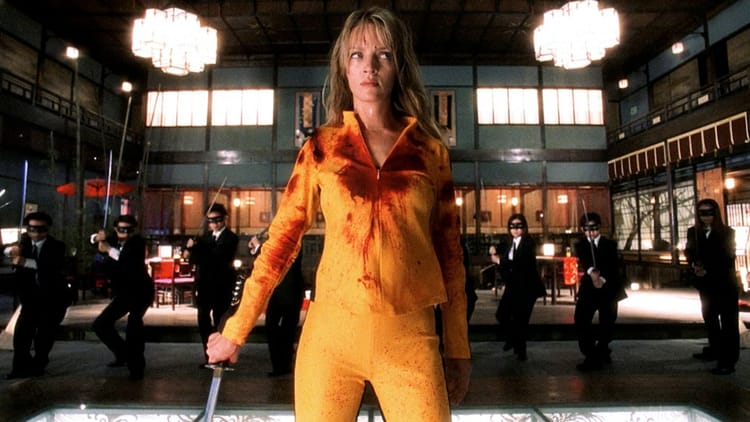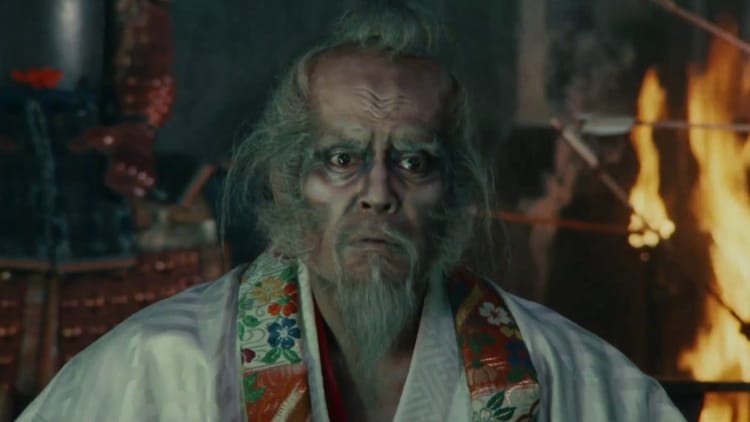Kagemusha

Kagemusha ain’t Seven Samurai, Yojimbo, or even The Throne of Blood. Nah, this one’s a whole different beast. It’s probably Akira Kurosawa’s most visually stunning work, and that’s saying something. Kagemusha is majestic, stately, and almost abstract. Kurosawa, at 70 years old, ain’t sweating the small stuff like conventional drama. Nah, hes deep into history.
Set in the mid-16th century, smack dab in the middle of Japan tearing itself apart in war, the movie follows a petty thief, Kagemusha (played by Tatsuya Nakadai), who lucks out. Dude looks just like Shingen Takeda, one of Japan’s top dogs. When Shingen gets snuffed out, his crew decides to keep it on the down-low and stick Kagemusha in his place to keep the enemies guessing.
Kagemusha ain’t just one story, though. It’s a whole damn tapestry. You got the thief slowly becoming Shingen, you got Shingen’s neglected son making his move, and you got Japan itself evolving. But Kurosawa ain’t giving any one of these tales the spotlight. His direction gives every scene this ritualistic vibe, but the narrative ain’t your usual rollercoaster.
The start of the film is a brain workout, man. So much exposition, you might need a notepad. Even an hour in, you might still be trying to figure out who’s who. And with all the jumping around between locations, reading those subtitles, you might get a little lost.
But about halfway through, you realize it ain’t about the specifics anymore. Kurosawa’s all about the big picture. He’s showing you court politics, Kagemusha’s transformation, and some seriously intense battles, all with this detached vibe like you’re watching from another dimension.
I banished my father and I killed my own son. I will do anything to rule this country. War is everywhere. Unless somebody unifies the nation and reigns over us, we will see more rivers of blood and more mountains of the dead.
The big showdown? It’s not what you'd expect. None of the main players are throwing down. They’re just watching this battle that’s gonna decide everything. Kagemusha’s back to being an outcast, watching from the sidelines, while Shingen’s son, now in charge, is chilling at a safe distance. It’s like fate’s already written the script.
In Kagemusha, Kurosawa’s diving deep into the chaos of battle with these stunning images, but it’s all distant, almost ghostly. The film’s got this strictness to it that shows Kurosawa’s thinking hard about man’s powerlessness against history.
Basically, Kagemusha is the story of a common thief pretending to be a big-shot warlord. But it’s all a big joke, really. Every scene’s dripping with irony. The thief ain’t Shingen, and he’s constantly being tested.
Kurosawa’s playing with the contrast between epic battles and those intimate moments. It’s like he’s saying all this samurai glory is just smoke and mirrors. Great human endeavors, like samurai wars, rely on shared beliefs, even if they ain’t rooted in reality. But when those beliefs crumble, it’s chaos, destruction, and death.
Kagemusha was Kurosawa’s labor of love, made after a decade of personal hell. It’s a simple yet deep film, suggesting that history only makes sense when ideas and men are swept along by the same current. And that final image, of the dying Kagemusha drifting in the sea? It says it all. History’s meaning only shows up when ideas and men are heading in the same direction.





